How to Use Targeting in a Media Buying Campaign
Last updated on June 21, 2023 by Martim Calmeiro 10 min readYou are currently in the "Beginner" - Learning paths

How to Create a Campaign on Mobidea

4 Profitable Traffic Types to Run with Mobidea Offers
6 min read
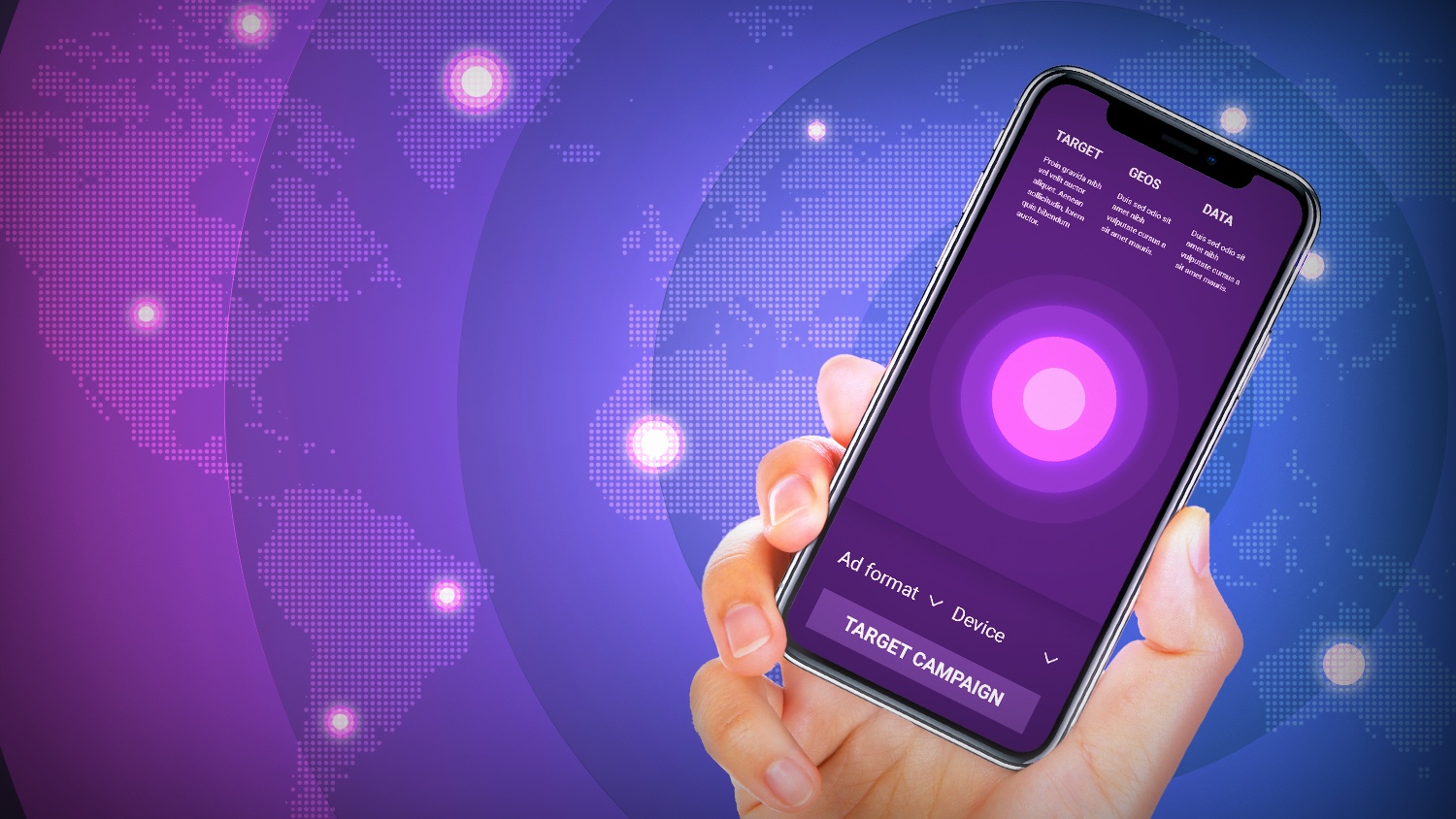
How to Use Targeting in a Media Buying Campaign
10 min read

Frequency Capping: Everything You Should Know
4 min read

Whitelists: Get the Most of Each Website
5 min read
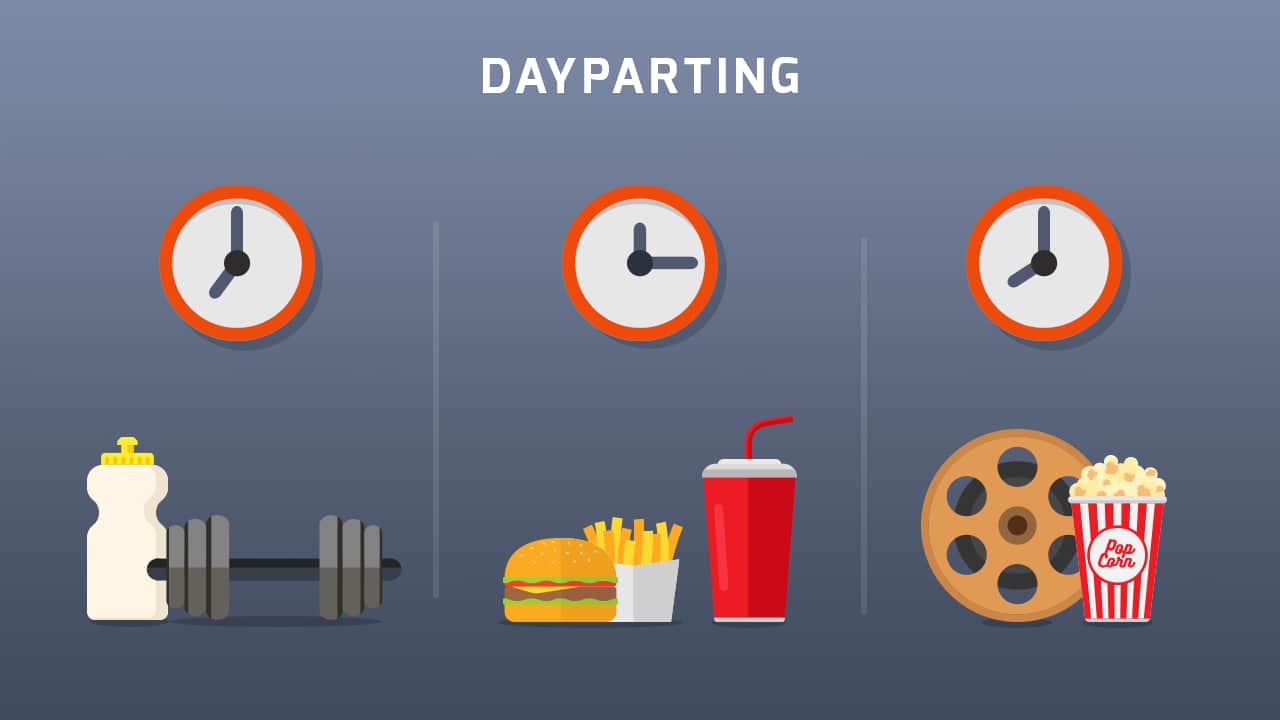
Dayparting: A Way To Boost Your Revenue
3 min read

6 Affiliate Marketing Metrics You Should Track
5 min read

How to Create a Killer Media Buying Budget Strategy
9 min read
Table of Contents
ToggleYou how important it is for you to launch your media buying campaigns correctly and to understand what your campaign target audience is before starting to play.
Indeed, letting one parameter become neglected is a huge media buying mistake.
We see this stuff happen all the time, and it just ain’t right!
By reading Mobidea Academy’s articles, you’ve been able to understand that having a well-performing tracking software is a hugely important step for you to always be up-to-date on the performance of your campaigns and the improvements that can be made.
We’ve mentioned how crucial it is to find the right offers, pick the best-suited affiliate network and even the best traffic sources for your needs.
Today, you’ll learn how to create a successful targeted media buying campaign.
Targeting campaigns is huge and it’s one of the most important steps you’ll have to take.
By choosing the wrong target, you’re basically signing your death sentence. In fact, by not knowing how to target, you’re risking profitability and would be a huge shame.
Moreover, you don’t wanna be the advertiser who gets conversions but doesn’t try to increase the amount of good quality traffic.
Some advertising networks are easy to work with and only allow simple options (the basic targeting) but others allow you to explore way deeper, getting to take advantage of an array of different features.
See also: Ad Networks Reviews
It’s time to find out how to create a target media buying campaign like the best of them!
What is Targeted Media Buying?
Targeted media buying gives you the ability to target a specific Device, Operating System, GEO, Language, Mobile Carrier, Source/Websites, Browser, User Interests, Dayparting or any other particular aspect you want to target on your advertising campaigns.
You may find more or less targeting filters depending on the advertising network you’re using.
Usually, media buyers target campaigns based on reliable data they analyze, which allows them to decide that a campaign will become more profitable if it becomes more targeted to a certain slice of the global audience.
Targeting is one of the most important concepts in affiliate marketing and advertising.
Got your targeting wrong in your media buying process?
You might as well be sending that cash out the window.
Why is it so important to have thorough online targeting settings?
When you target wrongly, you lose money.
When you target right but don’t see conversions, you gather data.
First scenario:
You’ll have data that doesn’t matter to you, because you can’t do anything with it.
Second scenario:
You’ll gather essential data to optimize later on.
This is why campaign targeting is so important in this game.
You make your decisions based on the data you gather, meaning that this is a fundamental parameter you need to think about at all times.
A well-performed campaign targeting can increase the CR (Conversion Rate) and the CTR (Click-through rate.)
It can also make sure you get traffic of a higher quality; traffic which is more suitable to what you’re looking for.
And guess what?
Even if you don’t see any conversions at first, you know you’re gathering data to make better and wiser decisions.
Campaign Targeting in Affiliate Marketing: General Overview
Your media buying adventure will allow you to meet all sorts of affiliate marketing players.
You’ll come across a variety of ad networks, offers, account managers, etc.
But there’s something common that you’ll find on all traffic sources that you’re buying traffic from.
What’s that?
Campaign Targeting.
Different advertising networks will have different targeting campaigns and features.
We recommend you check our listings depending on the traffic source you’re looking for.
When it comes down to it, though, they all lead to the same targeting parameters, i.e., country, operator, browser, operating system, etc.
Some networks will have shallow and basic targeting options, while other ad networks that you find in this business will have really detailed targeting options.
Experienced players usually like to work with detailed targeting options, while newbies are usually advised to start with wider and more general targeting campaign options.
But this is something that depends on the level of expertise and guidance you have.
Targeted Media Buying: Basic Targeting
Basic targeting is the simplest and most common targeting you can find while creating your campaigns. It’s related to general characteristics of the campaign like the geo targeting (can be country, region, state, etc.), the format sizes/banner sizes you promote or the categories related to your traffic.
It usually allows you to select the category of your traffic, ad format and the country from where you want to buy traffic.

Targeted Media Buying: Advanced Targeting
Advanced targeting is a kind of targeting that allows you to target an audience more precisely through such parameters as selecting the operators, operating system, device, traffic source, the specific location of the users, user freshness and any other available targeting filters.
As everything is connected, you need to be aware of, and to be able to understand, the reasons for choosing your global and specific targeting as this can have a huge impact on your performance.
Operators
Operator targeting allows you to target your campaigns to users based on their mobile carriers.
Choosing the right operator is an important decision.
How to select the operator?
First, you need to check which carriers are accepted by the offer you’re going to promote.
Second, you can count on your account manager to provide you with the information on performance for all the carriers and Wi-Fi.
Third, check the volumes and the bids on your ad network.
Remember: In general, Wi-Fi has cheaper traffic and huge volumes. However, it also has a lower performance than Carrier traffic.
You should also be careful with Carrier targeting as the performances, volumes and prices change a lot for different operators.
Now imagine that you choose all the carriers in a specific country.
The global performance may be negative, but one carrier can be responsible for all the profit you have.
So we should analyze the performance by carrier.
If the performances are similar, we can work with them in the same campaign.
If they are not, you can always duplicate the campaign and split the carriers to work properly for each one.
For each carrier you should understand how much you can bid, what are the most profitable OS, the best websites, etc.
Learn More: 3G Traffic vs Wi-Fi Traffic
This means that – if you’re a newbie – launching a campaign for US Wi-Fi may not be the best idea.
Our advice?
Create a separate campaign per each carrier, so you can analyze it in more detail.
Browsers
Make sure to pair browsers with device targeting for the best results.
Operating Systems & Devices
Desktop (Windows, Mac) or Mobile (Android, Blackberry, etc.)
Campaigns can be set to target specific operating systems and devices, which gives you greater control over the audience who actually see your ad.
There are a lot of operating systems.
Even so, we must check Android, iOS and Windows mobile.
Generally speaking, Android is the operating system with the largest volumes.
However, you’ll also notice that users tend to use iOS in some countries (e.g. United States, Canada, and Australia.)
Taking this into consideration, you need to check the volumes and performance of each operating system to make the best choice for your campaign.
Users are using different devices to navigate the online world, but the majority of mobile users are connected via their phones.
Don’t restrict your campaigns to mobiles only, though
Why?
Because tablets, for instance, can have decent performance in some GEOs.
If you notice a huge difference between performances, you can always split OS per campaign and adjust your options.
Take in consideration that you also need to cross-match OS, devices and Browsers.
If you select only iOS for your campaign, you cannot forget to have both iPhone on the devices and Safari as the browser.
OS can imply for example different strategies.
For an Android-only campaign, iOS banners should have a lower performance (check our article about Banner Optimization).
Remember to adjust device target according to the offers’ characteristics.
The offer characteristics can have a huge impact on browser and device performance.
The way we present the offer to our visitors will decide how well our offer performs.
That’s why it’s important to have specific stats per browser or device in order to optimize, and don’t discard data in any feature.
Languages
Language targeting allows you to filter users based on their language.
This feature is particularly useful for countries which use several languages.
Imagine you want to launch a campaign for Belgium.
Tricky!
This is a country in which people speak Dutch, French and German.
How to go about it?
In this case, you can create different campaigns separated by language and use creatives in the proper language, which will surely increase your conversion rates.
You can even select all languages and analyze how each performs for your campaign.
Moreover, there are some kinds of offers which are directed at a specific audience.
We’re referring to offers for Spanish-speaking users who live in the United States, for instance.
What does this mean?
That you can easily target language on the campaign settings.
User Freshness
This targeting filter is very common to find in push notification advertising networks. User freshness refers to the time that has passed since the users allowed to receive push notifications on their devices.
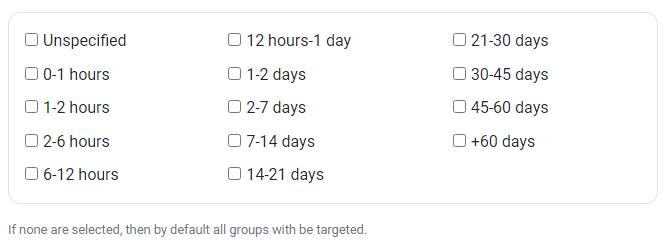
Dayparting
Dayparting allows you to select the exact times of the day in which you want your campaigns to run, and also in which specific time zone.
The results of your campaign may vary during the day, depending on the offer type, and targeting.
Adult offers tend to perform better in the evening and at night.
What to do?
Analyzing the performance per hour can make a huge difference, especially when you don’t have the possibility to reach top position all day long.
Select the hours when the performance is best and target only those specific time periods, which will help you to effectively cut your costs.
Choosing a larger bid and targeting specific tine periods when the performance is best will minimize costs and give you the best performance.
Websites
When available in the advertising platform, website targeting will give you the opportunity to promote your ads on the sites which showcase the best performance.
This will also allow you to create whitelists!
Want to know how to do it like a true pro?
Some ad networks are quite open about producing info regarding websites and even corresponding zones.
Other ad networks won’t give you the info on the website name, which means you’ll have source IDs.
What’s more important?
The opportunity to optimize your stats, based on the info provided, whether it be website name or source ID.
Keywords
Some advertising networks have keyword targeting.
This means you can pick words or phrases related to the offer you’re promoting in order to target relevant users.
Each keyword will gather traffic from several websites.
Want to make sure your ad has got the best exposure possible?
Then go ahead and use generic keywords.
There are many ad networks which have handy traffic estimators for keywords.
These show you the volume of traffic for each selected keyword in a specific country, device, or operating system.
Wondering how to come up with ideas for awesome keywords?
Nowadays, there are a lot of tools which can help you out.
We recommend you try SEMrush (14-day free trial) which gives you a huge variety of keywords connected to the one you’ve selected.
IP Range Targeting
Many affiliates collect their personal lists of IP addresses, which help them improve performance by addressing the ads to relevant users only.
Beware, though: The performance of your IP list may vary.
It can be better or worse than targeting a specific carrier on an ad network.
What’s the advice?
Test both and compare the performance to choose the winner!
Where to get the IP ranges like a media buying veteran?
Have you been running your affiliate marketing campaign for a while now?
Then the easiest way of getting IPs is from your stats.
Just check your tracker’s stats for IP for the carrier you want.
You can also ask your affiliate manager for IP ranges.
Advertisers usually share the lists of IPs with the affiliate network.
This means your account manager will gladly give them to you.
You should get close with your account manager.
Why?
Because they can give you the IPs which have successfully converted on the whole network.
You can use third-party services and purchase data bases of IPs, such as Maxmind.
Remember:
Not all IPs have a good performance, but you can always cut the ones that are damaging your overall results.
Regional Targeting Features
Remember basic targeting?
When we explained what geographic targeting was all about?
That’s right!
Geo targeting allows you to select the country from which you want to receive traffic.
Regional targeting is a more advanced feature.
Here, you can select regions, going inside each specific country.
This means you can target the state of Alabama directly, for example.
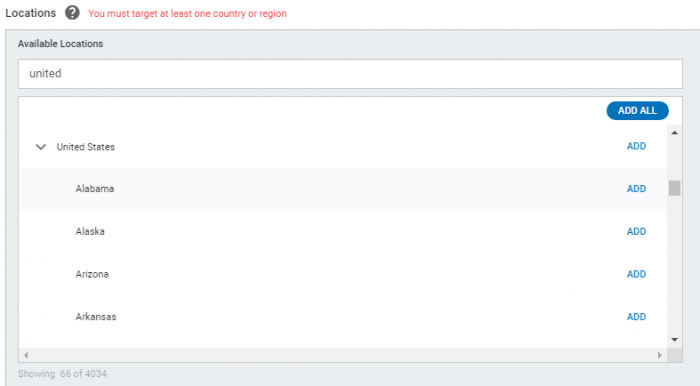
Example: locations targeting on ExoClick
This parameter is widely used in the promotion of campaigns directed at a specific region, such as dating, sweepstakes, coupons/vouchers, and CC submit offers.
Retargeting
Retargeting is a form of targeted advertising, which is targeted at customers selected based on their previous online behavior.
It allows you to include or exclude users who have already visited your website.
This targeting option helps to make ads more personal and really create target advertising campaigns that get you some awesome conversions.
Want an example of this type of ad network targeting?
Imagine you’ve been searching for pills to lose weight online.
What’s gonna happen, thanks to mobile performance marketing and its amazing ability to be everywhere?
You’ll start seeing some ads for the amazing pills that match your interest.
How’s it even possible?
It can be easily explained by the cookies stored in your browser and their careful analysis.
By showing users an ad that matches their interest, retargeting helps to increase conversion rates.
That’s how specific it gets, bro!
Demographic targeting
With demographic targeting, you can reach a specific set of potential users, who’ll fall into a particular age range, gender, parental status, etc.
Imagine you want to promote beauty kits for girls.
This would be an example of targeting women on your campaign.
Demographic targeting helps you narrow your audience.
This means you need to set these settings for specific product promotions.
Otherwise, test it and see the results!

Example: demographic targeting on Facebook Ads
User Interests
Targeting by user interests allows you to select the audience, based on their preference of product and services.
The range of interests varies depending on the ad network.
It covers such topics as entertainment, travel, computers, cars.
It then allows you to choose the one that’s best suited for you.
Interest targeting means that you’re targeting quite a large audience.
This means it’s always nice to use it in combination with other targeting parameters.
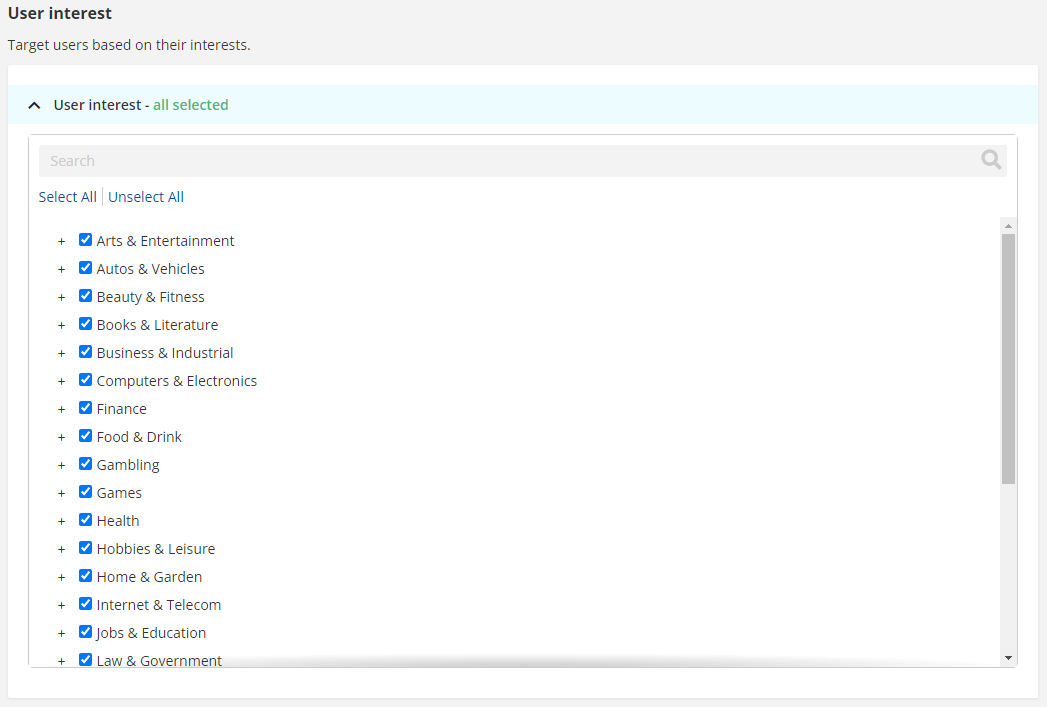
Example: user interest targeting on Adcash
Top Targeting Strategies
Strategy #1
Always check estimated volumes for the parameter of your targeting.
You don’t wanna end up with a campaign that’s not getting any traffic.
Strategy #2
What is digital media buying without correlations?
Nothing!
Remember that targeting parameters are correlated to one another.
You shouldn’t include Safari browser and cut iOS, for instance.
Correlations!
Don’t forget!
Strategy #3
Don’t be afraid of testing with a wide targeting.
Data is gold.
Without trying, you won’t know the result of your targeting optimization!
Be the one who’s eager to find new ways to play the media buying game and explore goldmines like a pro!
Strategy #4
Maintain good relationships with you account managers on ad networks.
They’re the ones who can make magic happen.
They can effectively open more targeting options for you (such as carrier targeting), which are not visible to just anyone!
What To Do Next
In the first part of this article, we saw the importance of choosing and setting correctly a campaign’s target.
In this second part, we’re gonna focus on the “what to do” after you launch a campaign and start to collect data.
Generally speaking, if you didn’t choose a narrow target, you will lose money in the first days as the data come in. You’ll then know where you should invest and what features to avoid.
The normal behavior should be like in the next picture:

In the first moment you should invest in different features, devices, OS, etc. to get information about the user’s behavior.
You should then analyze the performances and adjust your investment to maximize your profit.
Now let’s face the most common situations and learn what to do in each one .
Situation 1 – Hello money!
Almost everything in your campaign can give you profit.
Starting on the green, it’s not a common situation, because nowadays mobile media buying has a huge global competition in all segments.
Here are still some details you should have in consideration:
- Check if you didn’t choose a narrow target: It’s always good to start making money since the first moment, but ignore traffic without testing it will just limit your future gains. Test everything first and then decide. Data is gold!
- Calculate your eCPM to understand if you have margin to grow up even more. Climb to higher positions will increase your investment in good spots and also increase your margin. If you’re getting good results, try to conquer all the spot for you. Increase bid (according to the eCPM), try to add new features, increase the capping, etc
The more volume, the better!.
Situation 2 – Run away!
According to the GEO and offers, you should be able to understand if a segment should work or not.
If you launch a general campaign (all carriers, all OS, all devices) and you spend, for example, 5 or 6 times more the value of an average conversion you can take conclusions about the offer performance or the traffic quality source.
If nothing converts, stop the campaign because there’s nothing you can do.
Try to understand if a specific carrier, OS or device spent almost all the money and give an opportunity to test the other features.
If the problem persists, stop and try another Geo (if the problem is in the offer performance) or try the same segment in another Ad Network (if you think you can find traffic with better quality).
Situation 3 – Work hard, play hard!
This is the most common situation.
Your campaign obtained data, but you see different performances, some features are very good, others are a complete disaster.
Don’t panic and don’t start to cut everything that is negative.
It’s time to manage your campaign and work properly according to the performances.
You must understand when to do target changes. Your campaigns need time to collect data in order to provide safe stats.
You must balance your results with the characteristics of the offer(s) and Geo.
For example, if you have a campaign in Germany that spent €15 you can’t reach a conclusion, because a single conversion can cost more than €20.
In another way, if you spent the same budget in Thailand, where the average conversion pays just €0.70, you can analyze the performance and reach good conclusions with a smaller budget.
How can I make money from a non-profitable target?
This is an important question. When a campaign is not profitable, some media buyers think that’s the moment to cut all low performing sources.
However, cutting all sources will just kill your chances to grow and maximize your investment.
You can even turn green, but you’ll just give to your competition the possibility to make easy money.
Check the next situation, negative campaign with positive and negative features:
Costs:

Earnings:

According to our volumes and the average payout for this country (€10 per conversion) we can see very different performances for iOS and Android.
In this case, iOS costs cover four times the average payout for this Geo, so we can confirm that the performance is bad.
You should cut it and test it later in a few weeks if you notice some change in the offer’s performance or if you find a new solution.
We should also work with Android and all the others OS’ (because Android is converting well and the others OS’ don’t have sufficient volume to make any conclusions).
The campaign is automatically in profit, and we should also adjust our bid according to our eCPM, check our global performance, and take out iOS numbers.
Dividing the gains €40.65 for 55,749 impressions (global impressions minus IOS impressions) gives an eCPM value of €0.72.
Now let’s look at a different situation – Positive campaign with varied performance:
Costs:

Earnings:
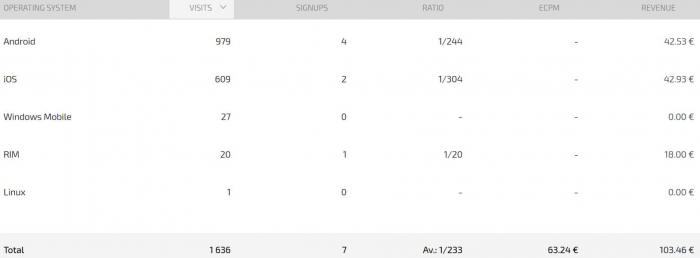
In this situation, we can see a €30 profit.
If you want to squeeze the campaign to its max, you can go to the details and analyze specific performance.
| OS | Costs | Gains | Margin | Impressions | eCPM | Conversions | Avg. Payout |
| Android | €24.45 | €42.53 | €18.08 | 145.467 | €0.29 | 4 | €10.60 |
| iOS | €47.14 | €42.93 | €- 4.24 | 270.160 | €0.16 | 2 | €21.45 |
| Blackberry | €0.21 | €18 | €17.79 | 1.287 | €13.99 | 1 | €18 |
| €34.66 | 416.914 | 7 |
We can see huge differences between the three OS.
The two main OS are Android and iOS, and even if they had the same costs, Android’s performance is profitable and iOS isn’t.
Blackberry is the most profitable OS with an eCPM of €13.99 (however, low data is not reliable enough to reach fixed conclusions).
To maximize our profits we should consider keeping all OS’s (because all of them have volumes and conversions) but we should adjust the eCPM according to their performance.
The crucial point here is to work properly with iOS and promote the best positions and efficiency for Android.
We should duplicate the campaign and work only for iOS separately with an appropriate eCPM of €0.16.
When we collect specific data for iOS volume, we can adjust other features like mobile devices, browsers, adjust banners, etc.
In the main campaign, we will decrease our costs and maximize Android performance working with an eCPM of €0.29, then take the same conclusions for specific performance after we split the
main campaign.
Since Blackberry doesn’t have a big volume of data, it can be in the main campaign with Android.
This logic here can also be applied to all stats we have about other features, but specifically to Carriers, OS and Browsers.
Another situation: Carriers performance
This is a common situation in different Ad Networks where you cannot target carriers, therefore you buy all types of traffic quality.
Usually, Wi-Fi has almost all the traffic and a lower performance, but the 3G traffic has very good quality.
You should balance if the 3G performance is enough to cover all the Wi-Fi performance and create a positive margin.
Total costs = €55
Earnings:
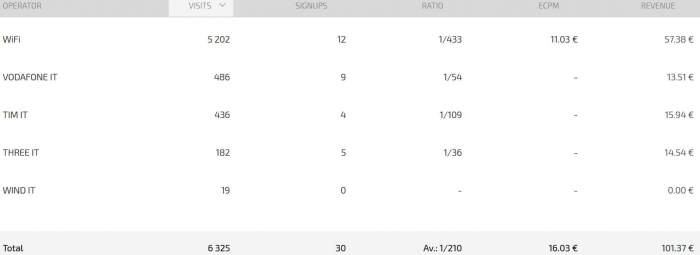
The conclusions from the data above point to a positive performance for both Wi-Fi and 3G traffic, but 3G shows an excellent quality and corresponding eCPM value.
The most common scenario is a negative margin for Wi-Fi traffic and then a healthy 3G margin, which compensates the campaign’s overall result.
In these cases, we must balance the performance of both traffic sources to reach a positive global result.
You should look to other features which you can manage, like banners and websites performance and target optimization, in order to have a profitable campaign, as shown in part 1 of this article.
If you aren’t able to change anything, and you must keep going with the selected targeting, or if the traffic quality it’s not profitable you are forced to stop the campaign since there is no margin for optimization.
From the situation above, you can see the importance of adjusting and working properly with data.
Working with boosting lower performances can make a huge difference to your wallet and test your competitors’ patience.
Lose some time checking your campaigns and always stay focused on market variations.
A new offer can provide good results in OS/Devices/Carriers that were erased before, so don’t forget to re-test from time to time features that are no longer running.
I hope this section proves to be a great help when executing your media buying campaigns and shows you a few different real-world perspectives.
I wish you good luck in your investments and analyses!
Conclusion
So what is targeting in media buying?
Well now you know, brother!
As you’ve been able to read in this awesome online media buying targeting article, there are several targeting options you have at your disposal when you create an affiliate marketing campaign.
Targeting options are really important if you want to make it in this game.
Testing new targets is very important to achieve success and increase your gains.
We’ve seen the basics and the advanced settings that you can find when creating a campaign, so keep an eye on them and remember that minimal alterations to a parameter of your campaign can make or break your affiliate journey!
Remember that the targeting options are different from ad network to ad network, and that – sometimes – you may not find a setting that you’d find on another ad network
A new carrier or a new device can make a huge difference to your results.
Even so, there are ad networks with targeting capabilities all over the place, ready for you to make it rain!
Now that you know the biggest part of the available options to target your campaigns, you must learn how to analyze and treat the data you get.
Ready to target like a master?
Pick an ad network from our ad networks list.

Martim is the coolest guy of all time! He's a people person, and loves spending time listening to stories and sharing his own. Having studied Political Science and International Relations, he's all about diplomacy! He sees things from a great perspective and is keen on presenting the best solutions to the harshest problems. That's why he became a member of Mobidea's famous Support Squad! His amazing tips and ability to guide affiliates is a testament to his life mantra: "the success of my affiliates is my success!" Since he managed to learn so much from his experience as a Support Squad Member, Martim now works in the Business Development Team, helping affiliates get back on the money train! When he isn't guiding Mobidea's users, Martim is probably surfing, enjoying the Portuguese beaches, and playing tennis like a real pro!
